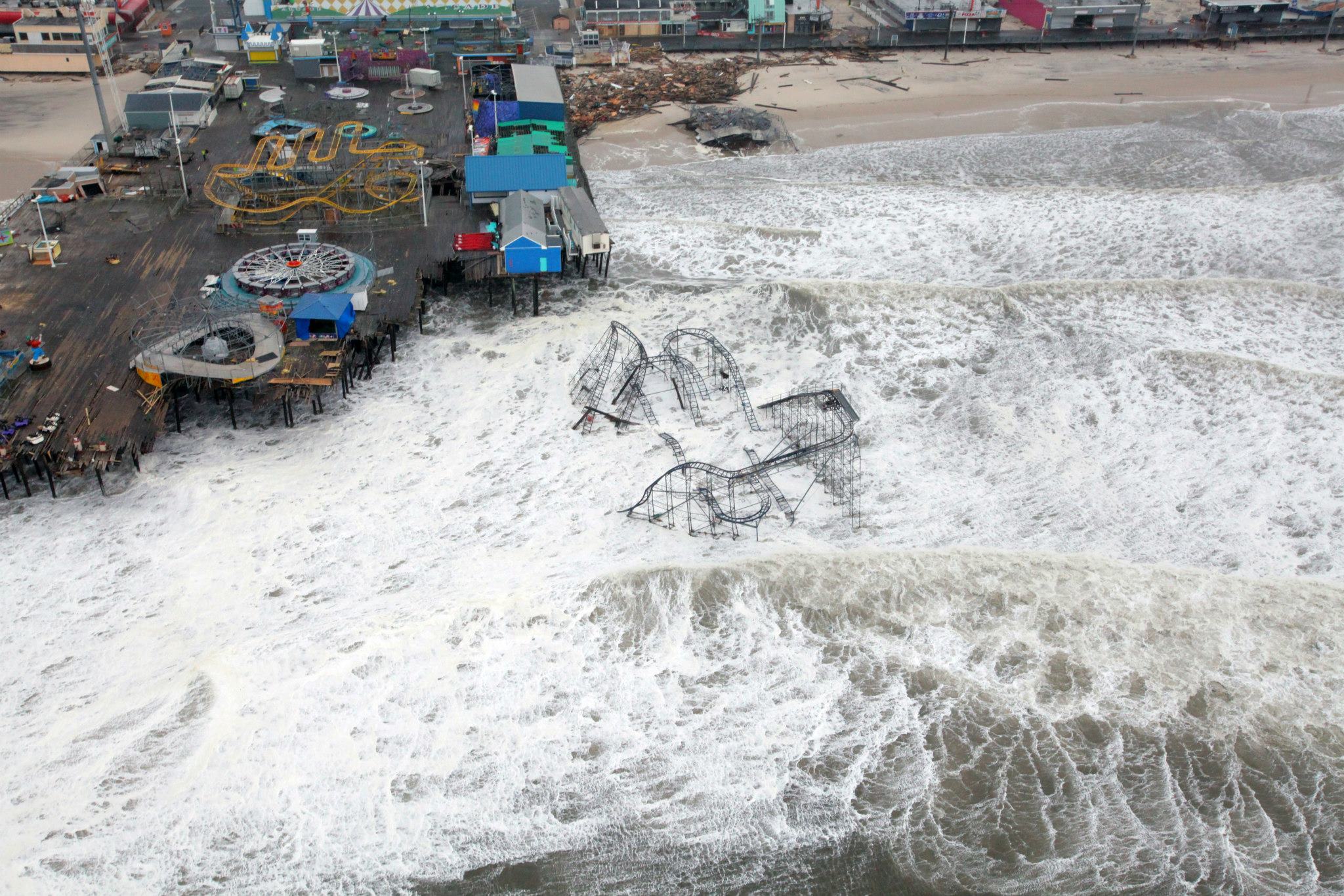 Currently scientists cannot answer whether or not Hurricane Sandy was caused by global warming. This is because scientists must conduct detection and attribution research studies which take many months to complete. For instance, meticulous analysis which take months to make have been taken on past severe climate events such as the Russian heat wave and Pakistani floods of 2010 but still have not succeeded in finding a complete agreement about the causes of them. However, it is apparent that climate change most likely made the hurricanes impact worse than they would have been otherwise. It is unmistakeable that global warming is contributing to rising sea levels and warmer ocean temperatures off the northeast and possibly through a bizarre weather pattern that some scientists think bore the fingerprint of rapidly vanishing Arctic sea ice. Although Sandy started off as a hurricane, drawing power from evaporation at the warm ocean surface, scientists recognized that by the end it was also drawing energy from another source: the extreme differences in atmospheric temperature and pressure that usually cause winter storms.
Currently scientists cannot answer whether or not Hurricane Sandy was caused by global warming. This is because scientists must conduct detection and attribution research studies which take many months to complete. For instance, meticulous analysis which take months to make have been taken on past severe climate events such as the Russian heat wave and Pakistani floods of 2010 but still have not succeeded in finding a complete agreement about the causes of them. However, it is apparent that climate change most likely made the hurricanes impact worse than they would have been otherwise. It is unmistakeable that global warming is contributing to rising sea levels and warmer ocean temperatures off the northeast and possibly through a bizarre weather pattern that some scientists think bore the fingerprint of rapidly vanishing Arctic sea ice. Although Sandy started off as a hurricane, drawing power from evaporation at the warm ocean surface, scientists recognized that by the end it was also drawing energy from another source: the extreme differences in atmospheric temperature and pressure that usually cause winter storms.

We can see a few patterns if we put into perspective the weather patterns as a whole. One way to look at it is that rainfall in tropical zones are becoming heavier. A study from the Massachusetts Institute of Technology based on data from the last 20 years anticipated that for every increase in one degree Celsius, tropical rainfall will be 10% heavier. Tropical rainfall can be an incentive for destructive weather. “Hurricanes don’t just create themselves; they begin in the tropics, where they move from disturbance to depression to storm, before being labeled a hurricane.” In discovering that tropical rain is getting heavier indicate that a storm most likely might be bigger and stronger, transforming into a behemoth like Hurricane Sandy did. As rains flow around a storm’s center, they’re building more heat, and developing a self-sustaining energy source. Hurricane Sandy ultimately clocked in as the second largest Atlantic storm in the world, with its winds extending over 580 miles (933 kilometers).

Satellite loop from the University of Wisconsin, showing Hurricane Sandy as it made landfall in New Jersey. (source)
On a similar note, a majority also view a warmer atmosphere and oceans as controlling elements for intense storms. They cause more moisture to be created and drop on us more immensely when storms hit. Many scientists look at this increasing rainfall as a signal that global warming won’t automatically bring us more hurricanes or storms but rather much more violent ones. Another aspect that made Hurricane Sandy unique was the cold northern jet stream (a current of high-speed winds) that headed south, reaching the warm tropical storm and creating a renewed blast of energy. Atmospheric scientists have observed that as the Arctic sea ice melts, the jet stream is more probable to move in large wavy patterns like it did with Hurricane Sandy. “Those patterns are courtesy of the North Atlantic oscillation, a defined region of pressure fluctuation.” And the Arctic Sea ice melting, of course, is often considered a symptom of global warming.
No matter what cause and effect led to this catastrophe, Hurricane Sandy is almost guaranteed to finish up being in the top 10 of costliest hurricanes in history. The hurricane comes shortly after Munich Re, a worldwide insurance giant that warned of growing natural disaster damages in the U.S., a pattern the company said is connected to global climate change. Regardless of the links between this specific storm and human-induced climate change, Hurricane Sandy acknowledged many urgent questions. Like the ways that climate change is affecting storm impacts and severe climate trends, and how exposed our coastal populations and infrastructure are to the those developing risks. These are questions that scientists, engineers, and political figures will be working hard to answer for many years to come.
http://science.howstuffworks.com/nature/natural-disasters/global-warming-cause-hurricane-sandy1.htm
http://www.climatecentral.org/news/how-global-warming-made-hurricane-sandy-worse-http://green.blogs.nytimes.com/2012/10/30/did-global-warming-contribute-to-hurricane-sandys-devastation/
http://www.huffingtonpost.com/2012/10/31/climate-change-hurricane-sandy-global-warming_n_2050516.html